
In the world, which, by February 24, 2022, most Ukrainians and Europeans seemed peaceful and friendly (although a considerable number of Ukrainians understood the fallacy of this thesis in 2014), there are many conflicts. They are at different degrees of activity. Some are in the hot phase, others are slowly smoldering, without attracting the unnecessary attention of the inhabitants. However, in all these wars, people who certainly seek them as soon as possible are killed and suffer.
Focus gathered seven topical conflicts, each of which is unique in their own way, and together they form the world picture of war and peace. Unfortunately, there are many more wars in the world, but the selected examples are originally different, and at the same time have a lot in common (some of them are even interconnected), and all together affect global policy and affect the world security architecture.
Kurds are the greatest people in the world without their own state (hereinafter followed by Sikh, Roma, Uigur, Catalan). They live compactly in Turkey, Iran, Iraq and Syria and call these lands Kurdistan. There are about 40 million Kurds in the world, more than three -quarters of them live in Kurdistan. The state with this name was to be formed more than a hundred years ago according to the results of the Sevre Peace Treaty (1920).
The Entente imposed on the Ottoman Empire, but decisive resistance from the Turks of Turks Mustafa Kemal Ataturk led to the signing of a new agreement in Lausanne in 1923. It no longer envisaged any Kurdish state. In the newly created in the Ottoman Empire, even the word "Kurd" was banned. Representatives of this ethnic group until the beginning of the 21st century. called "mountain Turks". Any manifestations of their culture and even writing were strictly banned.
Thus, as early as 2007, the mayor of Dmitbakir Abdulla Demirbas was removed from office for a call to print open public information in Kurdish. However, the Kurds did not give up their struggle for statehood. In 1984, the situation in the region grew into a hot conflict. The most radical political force of Kurds - the Kurdistan Workers' Party (RPC, founded in 1978) - began the armed struggle for independence.
In response, the Turkish authorities declared martial law in the region and sent punitive detachments there. Until 1995, about 15,000 Kurds were killed with the military clashes of government troops with the rebels. Over the following decades, another 25,000 were killed. In the 1980s and 1990s, up to 200,000 servicemen of the Turkish army and about 5-10 thousand fighters of Kurdish formations took part in the conflict. In 1999, he was arrested (captured by Kurds) leader of the RPC Abdulus Odzhala.
He was first sentenced to death, but later the sentence was softened, which opened the path to the negotiations. The softening of the Turkish authorities on the Kurdish issue was conditioned by progress in negotiations with the EU on Turkish membership in the organization. And in Brussels, there are no military operations against national minorities, as well as their discrimination is forbidden.
Therefore, no one would have become negotiated with a country where people are imprisoned for any inscriptions in their native language. Rezhep Erdogan, who led the Party of Justice and Development and became the Prime Minister at the beginning of the century, even began to focus on the Kurdish electorate, which looked quite extravagant at that time. However, the situation has changed dramatically after deterioration of relations with the EU in the middle of the "tenth" and the coup of 2016.
Then the Turkish authorities suspended membership negotiations with the European Commission. Accordingly, any concessions of Kurdam were curtailed. Their leaders were thrown into prison, the RPC was again declared terrorists, and all who support them - sponsors of terrorism. Turkish troops began to strike in Kurdish positions in Iraq and Syria (where Kurdish armed detachments help the United States to fight radical Islamists, which adds heat to this and so rattling Middle East boiler).
Also, the issue of support for Kurds almost slowed the introduction of Finland and Sweden to NATO, but here Ankara, unexpectedly for everyone, made concessions. But in other aspects of Kurdish policy, the Erdogan government holds the most irreconcilable position. He categorically denies statehood both Kurdam, who live in Turkey (about 20 million people) and Syrian Kurdam (approx. 3 million people). Turkish military operations are now carrying out operations against the RPC outside the country.
Thus, in Iraq, a military operation has been taking place since April, contrary to the will of the official Baghdad. Ankara states that it strikes exclusively on the positions of the Kurdistan working party (ie Turkish Kurds "), and at the same time Iraq's authorities accuse the Turks of the death of civilians. The Turkish military also suffered, so on September 12, the Turkish Ministry of Defense declared the death of four of its military.
Given the number and determination of the Kurds on the one hand and the uninterruptedness of the Turkish authorities on the other, there is no resolution of conflict in the near future. As a result of the collapse of the Ottoman Empire, which lost the First World War, the territory of the modern Syrian Arab Republic was transferred to the management of the victorious country-France. In 1930, Syrian statehood was proclaimed.
In fact, these territories were colonized, and the state with the capital in Damascus received real independence after the Second World War. Although it inherited its name from the powerful Middle East Monarchy of the Ancient World, the geographical names remained from that Syria for more than 2 thousand years of history. In fact, lines that did not reflect the real ethnic-civilization and religious (which is especially important) were drawn on the map.
Although 90% of the Syria population are Arabs, cultural division is more multifaceted. Among them are 73% of Sunni Muslims, 10% are Christians, and about 16% of Alaviti (Shiite Sect) to which the ruling dynasty belongs. The rest, almost 10%, are Kurds, Armenians and other ethnic groups. The father of the current President of Syria Hafz Assad, who seized power in 1970, tried to reconcile all this conglomerate with the secular nature of the state and cruel repression.
Thus, during the suppression of the uprising of the radical Islamist (Sunni direction) organization "Muslim Brothers" in Ham in 1982, about 25,000 people were killed. However, the political stagnation in which the country met the 21st century. After the thirty-year rule of Assad Sr. and the transfer of power to his son only exacerbated the existing contradictions. The transfer of power from father to son testified to its virtually dynastic character.
In a country where mentioned above, the majority of the population is the concentration of all power in the Alawit dynasty significantly exacerbated the confrontation on ethno-religious soil. Syria did not add optimism to Syria. The times of the panararabism on which the Hafz Assad regime was held.
The twenty-first century Middle East met against the background of the growing influence of the Gulf monarchies, for which the confrontation between the Shiite Iran was more relevant than the Israeli-Palestinian conflict. And over time, this trend only increased. The board of the younger Assad only exacerbated the situation. He tried to reform and transform "Arab socialism" into a market economy. Bashar Assad eliminated existing state monopolies, but privatization was opaque.
Zakhari Luba Middle Eastern Operator notes that most of the former state resources have focused on the hands close to the ruling top. In addition, in 2006-2010, Syria also survived the unprecedented drought, which significantly affected the economic situation of the well-being of the population. This state of affairs, along with social problems, resembled a powder barrel, which is only waiting for its spark. The spark broke out in 2011, when the protest wave of the Arab spring reached Syria.
Several teenagers in the city of Deraa wrote an anti -governmental slogan on the wall. The police arrested them and tortured them that she was outraged by relatives and acquaintances of the children who came out for the demonstration. Her acceleration was outraged by already familiar protesters, which caused an avalanche -like effect.
In the end, everything went to armed clashes with government forces and the capture of the rebels under the control of entire settlements, which spread the ideas of radical Islam. Among them is Al-Qaeda, which formed the Jabgat An-Nugasra group and the Islamic State of Iraq, which was previously broken away from Al-Qaeda.
At the same time, the US, the European Union and some Arab states recognized the Syrian government in exile and helped it form its own army from the most active demonstrators and defectors by government forces. Syrian Kurds are a separate large current of the opposition movement of Bashar al -Assad. Numerous smaller groups also opposed the Syrian authorities. Already in the first months of the conflict, the entire cities crossed the insurgents, the largest of which was the city of Aleppo.
In response, Assad regime began to use chemical weapons against insurgents, in particular in the territory of large cities, where civilians suffered from it. In 2013, the United States was ready to use force against Syrian authorities, but they were abandoned by the Russian Federation, which in two years introduced troops in Syria. At that time, Assad regime was in difficulty, and its fall seemed quite real.
However, the most powerful force among the disparate rebel forces since 2014 has already been IDIL, which controlled the territories of Eastern Syria and Western Iraq. It was the threat of arrival to power that was used by the very radical and cruel Islamists of the Russian Federation as an occasion for the introduction of troops. With the help of the Russian aviation and Iranian proxy until 2018, government forces have been able to restore control of most of the country.
However, in the northeast, a new force was formed in the fight against ISIL - detachments of Kurdish Peshmerg's Kurdish self -defense, supported by the United States, but prefers to destroy Turkey. The latter eventually introduced its troops to create a buffer zone between Kurds and Turkish borders.
In the spring of 2022, Turkish President Recep Erdogan declared its intention to expand the boundaries of the controlled territory, justifying it by the persecution of the Kurdistan Workers' Party's fighters. However, this will happen in the territories controlled by Pashmer. On August 17, shelling of the territories determined by the Turkish authorities began. After that, rumors began to spread that Erdogan has begun to renew with Bashar Assad, but the official Ankara is now refuting them.
No one can say how much war against all in Syria. On the lands of this Middle East state, many great players have come to life. And this can delay a conflict that lasts for more than ten years, for a long time. There is no stability in the neighboring Iraq with Syria. From the late 70's of the twentieth century. There he usurped the power of Saddam Hussein. In 1980-1988 he waged war with the main enemy of the United States in the region-Iran.
After the end of the war, Saddam decided to annex Kuwait, which caused rage to former overseas friends, as a result of which the United States with allies defeated the troops of a careless dictator within the framework UN No. 678, which allowed the Kuwait States to apply all means to end the conflict. Already in the spring of 1991, resolution No.
687 was adopted, which regulated further relations with Iraq-sanctions were imposed against the state until it completely abandoned weapons of mass destruction and stopped repression against its own people (in the 1980s, the Kurdish settlements were subjected to the side of the regime in the 1980s. in the north of the country). This envisaged cooperation with the UN on the control of this arsenal. Paragraph 34 of this resolution defined the conditions for implementation of the document.
The next 12 years Iraq was in almost complete economic isolation. Eventually, George Bush Jr. decided to end his father and shift Hussein's regime in 2003. The reason for the war was the reluctance of Iraq to cooperate with the UN in the control of weapons control over mass destruction. That is, a violation of resolutions 687 and unanimously adopted by the UN Council of Resolution No.
1441, which according to the US and their allies, stated that the previous resolutions were violated, including resolutions 687. The then commentator of the International edition of International Herald Tribune Dajuzi Ignatius. : disarm or die. But disarmament would eventually lead to the second option, given the attitude towards the regime of ordinary Iraqi after the years of the state under sanctions and repression. The United States said it gave them permission to apply force.
However, weapons of mass destruction in Iraq were not found. US troops were withdrawn from Iraq in September 2010. After the de -occupation of the country, Baghdad failed to cope with the geopolitical challenges of the region on its own. In 2014, the former military and officials of Saddam Hussein took place. Under the auspices of IDIL, they seized the western part of the country and moved to Baghdad. The capital was rescued by the Iranian proxy, headed by General Kasma Suleimani.
Thus, as of 2015, the main consequence of the seven -year occupation of Iraq by American troops was the capture of the country under Iran's control, the main enemy of the United States. In the end, the Washington formed a coalition of dozens of countries, and Iraq was released in 2017. Particularly noted in this struggle of the Kurds, who, after the expulsion of IDIL from Iraq, proclaimed their own country in their compact residence in their compact residence.
Having priority the territorial integrity of Iraq, the United States and the international community did not recognize the Kurdish state. However, Iraq's situation is difficult. There is no political stability. Normal dialogue between the main ethno -religious groups - Sunites, Shiites and Kurds - too. Although there are no active fighting in Iraq, the return of ISIL (or radical Islam in another form) looks quite probable as the aggravation of the situation in the unrecognized Kurdistan.
Mass anti -Iranian demonstrations are currently in the country. At the end of August, the protesters even made their way into the green zone (Government Quratal in Baghdad) after completing a political career as the leader of Iraqi Shiites (pro-American, not Proiranian) Muktada Al-Sadr. Then dozens of people were killed in clashes with government forces. Although the situation is temporarily calmed, Iraq is on the verge of another destabilization with seriously predictable consequences.
Because the conflict is not exhausted and none of the political groups is ready to give way to the peaceful way. At the turn of the nineteenth/XX century. The world has gained the power of the Zionist movement, which professed the idea of returning the Jews to the historical homeland. It meant subordinate to the Ottoman Empire and inhabited (from the VII century) Arabs the territory of Palestine, at which Jewish states existed in the I millennium BC.
With the transition of the territory of Palestine under the British control over the results of the First World War, the Zionist movement only intensified. This caused conflicts with the local Arab population and even escalated into a three -year Arab uprising in 1936, which was suppressed by British troops. Wanting to avoid unnecessary tensions in the region's fulfilling region, the British authorities tried to slow down the process of settlement of the territory by Jews.
All changed the Second World War, when a significant number of representatives of the Jewish people emigrated to Palestine illegally. In 1945, the Zionists were supported by the United States. It became apparent that the region of British domination in the region was approaching. However, his future had to decide the UN. Two variants of Palestine - the Confederation of Arabs and Jews or the formation of two independent states were prepared.
At a meeting of the United Nations General Assembly on November 29, 1947, the second option was adopted - the formation of a Jewish state, which was to occupy 56. 47% of the Palestinian British Government, and the Arab state, which was to occupy 43. 53% of land. Jerusalem had to remain under international control and open to both peoples. The problem was that in 1947 in Palestine lived twice as many Arabs as Jews.
So as soon as Palestine left the last British soldier formed the day before the state, Israel declared a war at once 6 Arab states - Egypt, Transjordan, Syria, Lebanon, Saudi Arabia and Yemen. The first four from the list of these countries introduced troops into Palestine. This was only the first of the whole series of Arab-Israeli wars that took place in the XX century.
It ended with the occupation of the Jewish state part of the territories, which, according to the resolution of the UN General Assembly, should be Arabic. Де-факто резолюція від 29 листопада 1947 р. так ніколи й не була втілена у життя. Практично після кожної нової агресії арабів проти єврейської держави, Ізраїль захоплював все новіші території.
Так, після Шестиденної війни 1967 р. Ізраїль окупував у кілька разів більшу територію, ніж його власна площа — Синайський півострів, Сектор Гази, Західний берег річки Йордан та Голанські висоти.
Уряд єврейської держави заявив, що поверне ці землі, якщо арабські держави визнають його право на існування. У відповідь араби почали масово вступати до лав утвореної у 1964 р. Організації визволення Палестини (ОВП). У 70-80-х рр.
вона набула значної популярності серед світової спільноти, навіть попри те, що для досягнення своїх цілей не гребувала здійснювати теракти проти євреїв як у Палестині, так і за її межами. Врешті у 1988 р.
лідер ОВП Ясір Арафат оголосив про створення незалежної Палестинської держави. Бувши мудрим політиком, уже через місяць після того він відмовився від терористичної діяльності та почав шукати можливості для мирних переговорів з Ізраїлем. 13 вересня 1993 р.
у Вашингтоні за посередництва президента США Білла Клінтона Іцхак Рабин від імені Ізраїлю та Ясір Арафат від імені Палестини підписали угоду про утворення Палестинської автономії.
Після цього Ізраїль вивів свої війська з територій Західного берегу річки Йордан та Сектора Гази. Палестина отримала самоуправління, але не визнання. Обидва народи неоднозначно сприйняли цю угоду. 4 листопада 1995 р.
єврейський націоналіст убив прем’єра Рабина, помстившись за визнання Палестинської автономії. У наступні десятиліття Ізраїль неодноразово окуповував територію автономії. Проте до анексії більше не вдавався.
Водночас спірні території активно освоюються єврейськими колоністами. Врешті за підтримки США Ізраїль добився визнання значною кількості країн анексії Східного Єрусалиму та перенесення туди посольств (тобто фактичне визнання міста столицею єврейської держави). У 2020 р.
були підписані Авраамові угоди, що покликані нормалізувати відносини між Ізраїлем та арабськими країнами. За останні два роки між Ізраїлем та Палестиною відбулося два яскравих конфлікти із взаємними обстрілами територій та жертвами з обох сторін.
Останній завершився на початку серпня 2022 року черговим перемир’ям. Та чи протримається воно хоча б до наступного року? Остаточне завершення конфлікту у близькій перспективі не передбачається, оскільки не видно предмету для компромісу.
Проте, найімовірніше, Ізраїль знайде спосіб домовитися з провідними арабськими державами та анексує усі цінні землі регіону. При утворенні Закавказьких республік СРСР не врахував реального розселення місцевих етносів.
Коли радянська влада суттєво ослабла у 1988 році у місцях компактного проживання вірмен на території Азербайджанської РСР розпочалися сутички між вірменами та азербайджанцями. Це був перший міжетнічний конфлікт на території СРСР, який розпочався ще до його розпаду.
22 лютого 1988 р. після заяви Ради народних депутатів у Карабасі (20 лютого) про намір приєднатися до Вірменії в Аскерані (Нагірний Карабах) відбулася перша велика сутичка між вірменами та азербайджанцями. Останні заявили про двох загиблих.
У відповідь через 5 днів відбувся вірменський погром в м. Сумгаїті (передмістя Баку), де офіційно загинуло 32 людини, проте вірмени заявляють про сотні жертв.
Це стало поворотним моментом конфлікту, який до розпаду СРСР залишався вуличним (тобто не було прямих військових зіткнень). Вірмени почали залишати Азербайджан, натомість азербайджанці тікали з Вірменії та Карабаху.
З розпадом СРСР протистояння переросло у повноцінну війну між обома державами, яка завершилася повною перемогою Вірменії — було окуповано близько 20% території Азербайджану. Близько мільйона людей стало біженцями (870 тис.
азербайджанців покинули регіон конфлікту та саму Вірменію, а близько 300 тис. вірмен покинули Азербайджан). Єреван не став анексовувати окуповані території.
Він не визнав незалежність Карабаху, але залишив окупованими крім самої невизнаної республіки ще й "буферні райони", що сполучають Вірменію з регіоном. До 2020 року жодна держава світу так і не визнала Карабах.
Проте конфлікт був замороженим і де-факто Нагірний Карабах контролювався Вірменією, хоча відповідно до норм міжнародного права усі ці райони є і були законними територіями Азербайджану. При цьому владу в самій Вірменії контролював "карабаський клан".
Саме в Степанакерті (столиці невизнаного Карабаху) народилися другий та третій президенти Вірменії Роберт Кочарян та Серж Саргсян, які встановили авторитарний режим правління у країні з 1998 по 2018 роки.
За два десятиліття замороження конфлікту багатий нафтою Азербайджан суттєво переозброївся. Баку цікавив доступ до передових військових технологій, який він отримав, співпрацюючи з Ізраїлем, Туреччиною і, що цікаво, продовжуючи зберігати дружні відносини з РФ.
Москва постачала озброєннями обидві сторони. Інша річ, що для Вірменії РФ була чи не єдиним постачальником. Вперше свої м'язи Баку продемонстрував у 2016 р. Тоді азербайджанська армія зайняла кілька прикордонних висот.
Сприятливі часи для повномасштабного наступу настали після падіння в результаті масових протестів "карабаського клану" у Вірменії. Новий прем’єр-міністр країни Нікол Пашинян сам не мав жодного стосунку до Карабаху. Також він виявився достатньо далеким до Путіна.
У той самий час Азербайджан суттєво зблизився з Туреччиною, яка стала новим регіональним лідером. Кращих умов годі було чекати, і наприкінці вересня 2020 року азербайджанська армія пішла в наступ.
В результаті 44-денної війни Баку повернув під свій контроль усі "буферні райони" та частину Карабаху. Решту території невизнаної республіки зайняли російські миротворці.
Після підписання угоди у листопаді 2020 року вірмени масово залишали території, що мали відійти Азербайджану.
Журналісти фіксували факти спалення власної нерухомості, також вивозилися навіть вікна та двері з кафе, ресторанів, за вірменський кордон переганяли череди корів та овець. Звільнені території заселяють азербайджанці.
Символом нового життя офіційний Баку прагне зробити місто Шуша (взяття якого азербайджанськими військами на початку листопада 2020 році визначило переможця війни).
За менше як рік часу Азербайджан встиг спорудити пряму дорогу з Баку до міста та звести у ньому новий аеропорт.
Проте відкритими залишаються питання збереження вірменської культурної спадщини, адже цей народ віддавна проживав на цих землях і залишив чимало архітектурних пам’яток.
Показовою може стати ситуація з реставрацією Собору Святого Христа Всеспасителя, який постраждав від бойових дій. Азербайджанська влада обіцяє його реставрувати, відповідно до радянських документів, де не містяться згадки про вірмен.
Також у місті швидкими темпами споруджуються мечеті. З 2020 року сторони періодично обстрілюють одна одну. Останніми днями відбувається чергове загострення.
Воно вирізняється тим, що обстріли відбуваються вже не на спірних територіях, а безпосередньо на Вірмено-азербайджанському кордоні. Фокус стежить за розвитком подій. Наразі конфлікт знову заморожено, проте вже на умовах Азербайджану.
Вірменія повністю втратила контроль за усіма окупованими на початку 90-х рр. територіями. Проте частину Карабаху разом з невизнаною столицею контролюють російські миротворці.
Таким чином, господар Кремля продемонстрував, що Москва не бажає однозначного вирішення будь-якого конфлікту у регіонах, де вона зберігає свій вплив.
Проте є версія, що на зупинку Азербайджанського наступу не так вплинула Москва, як перемога на виборах президента США Джо Байдена, який називає себе "другом усіх вірмен". Що буде, якщо конфігурація сил за океаном знову зміниться — питання риторичне.
Після Першої світової війни Сербія як одна з країн-переможниць об’єднала народи Балкан у Королівство сербів, хорватів і словенців, яке у 1929 р. змінило назву на нейтральнішу — Югославія.
Де-факто домінуючу позицію в ньому займали серби, хоча декларувалась ідея об’єднання південних слов’ян в одну державу (звідси й назва). Але населення Югославії було вже надто строкатим.
Самі серби — православні християни, словенці та хорвати — католики, а босняки (південнослов’янський народ, який живе переважно в Боснії і Герцеговині та у прикордонні між Сербією й Чорногорією) — мусульмани.
Така збірна солянка проживала відносно мирно в умовах диктатури (упродовж 1945-1980 рр. країною залізною рукою управляв Йосип Броз Тіто).
Проте з ослабленням соціалістичного блоку й падінням авторитарних режимів у Східній Європі, ослабла влада й у Югославії (сама країна упродовж Холодної війни лавірувала між обома ворогуючими блоками). Це призвело до ефекту чайника, що вибухнув.
Накопичені десятиліттями суперечності між строкатим населенням держави вилилося у криваві етнічні чистки у різних регіонах країни, яка розпадалася.
Коли у 1991 році югославські республіки почали проголошувати суверенітет, виявилося що на території деяких з них компактно проживають серби, які стали сепаратистами у сепаратистських республіках. Така ж доля спіткала і сербів, що проживали у Боснії та Герцоговині.
Після того як новоутворену державу визнав увесь світ, серби почали фактично громадянську війну проти мусульман та католиків, що населяли країну.
Війна тривала три роки й супроводжувалася жорстокими етнічними чистками апогеєм яких стала різанина у Сребрениці, що сталася в липні 1995 р. Тоді сербські збройні формування вбили близько 8 тис. боснійців-мусульман чоловічої статі.
Врешті восени 1995 року США запросили сторони на переговори, які протривали близько місяця на закритій військовій базі у Дейтоні. Тоді серед журналістів ходив жарт, що політиків не випускали з бази, поки вони не домовляться.
У такий спосіб побачили світ Дейтонські угоди, за якими державна влада була порівну розділена між трьома етнорелігійними групами — православними сербами, босняками-мусульманами та католиками, якими переважно є хорвати.
При цьому, босняки та хорвати були об’єднані в одну адміністративну одиницю, що займає 51% території держави, відповідно сербська автономія охопила 49% площі країни. Тобто хоча членів президії є три, автономних адміністративних утворень — лише два.
Обоє з них наділені своєю вертикаллю влади. Католико-мусульманська територія делегувала двох представників до вищого виконавчого органу — президії (що заміняє президента), а Сербська Країна — одного. Тобто в державі замість президента утворився триєдиний глава.
А розсудити їх мав спецпредставник ООН, який практично зосередив у своїх руках політичну владу. Цікаво, що конституція Боснії та Герцоговини виявилася додатком до Дейтонських угод.
Наступна чверть століття існування цієї держави показала неефективність такої системи державної влади. Адже президія демонструвала вкрай низьку функціональність. Фактично кожна автономія керувалася окремо.
Це лише віддаляло країну від католико-мусульманського конгломерату. У 2021 році Росія заблокувала призначення чергового представника ООН, що з новою силою запалило конфлікт. Боснійські серби всю осінь демонстрували м'язи, проводячи військові навчання.
Допомогти "братам" готовий і Белград. Зараз лідер боснійських сербів Мілорад Додік повертається до риторики погроз напередодні парламентських виборів у країні, що мають відбутися 2 жовтня. З великою ймовірність тоді можна очікувати чергової хвилі загострення ситуації.
Багато в чому подальша доля регіону залежить від результатів війни в Україні. Сербський реваншизм доволі значний, що сприяє потенційному розгортанню конфлікту, проте у випадку поразки РФ Сербія сама не наважиться на ескалацію.
Активні бойові дії тривають в Центральноафриканській республіці з 2013 року. Тоді повстанці звинуватили чинного президента Франсуа Бозізе у недотриманні мирних угод, які були підписані у 2007 році. За ними влада гарантувала амністію учасникам повстанської групи Seleka.
У такий спосіб припинилося попереднє загострення, яке тривало з 2001 року. У 2013 р. повстанці рушили на столицю Бангі та почали терор проти немусульманського населення (більшість групи Seleka — мусульмани).
У відповідь християни республіки почали формувати загони самооборони, які теж запам'яталися етнічними чистками проти представників інших етнорелігійних груп.
Реагуючи на ці криваві події, ООН ввела ембарго на постачання зброї до країни, а Франція ввела війська для захисту законного уряду.
Проте більшість території країни залишилися під контролем християнських та мусульманських повстанських угрупувань, які продовжили воювати між собою. Місія французьких військових завершилася через три роки.
Одразу після виводу французького контингенту повстанці Seleka намагалися зашкодити вступити на посаду новообраному президенту Фостен-Аршану Туадера. Тоді керівник країни звернувся за допомогою до Російської Федерації.
Москва залюбки прийняла запит в обмін на контроль за корисними копалинами країни — переважно золотом та діамантами. Навчальна російська військова місія була затверджена ООН у 2017 р. Офіційно російські військові інструктори готують персонал урядової армії ЦАР.
Проте за неофіційною інформацією у країні також діють спецпідрозділи так званої приватної військової компанії (ПВК) "Вагнер", які охороняють місця видобутку корисних копалин, зокрема, діамантові шахти.
У 2018 році бійці компанії Вагнера "засвітили" свою базу, якою виявилася колишня резиденція імператора Центральноафриканської імперії, диктатора-людожера Бокасси, що правив країною 50 років тому.
Влітку того ж року неподалік цього місця за загадкових обставин було вбито членів російської знімальної групи, які за день до своєї смерті заїжджали на цю базу з метою зняти сюжет до документального фільму про ПВК "Вагнер", проте їм не дозволили проводити зйомки через начебто відсутню акредитацію.
Журналіст Орхан Джемаль, оператор Кирило Радченко та режисер Олександр Расторгуєв займалися зйомкою фільму про вагнерівців у ЦАР на замовлення "Центру управління розслідуваннями" російського опозиціонера та колишнього олігарха Михайла Ходорковського.
30 липня 2018 року їх тіла знайшли на дорозі неподалік міста Сібю, що знаходиться на 200 км на північ від столиці країни м. Бангі.
Спершу вважалося, що їх вбили з метою пограбування, проте через кілька місяців близькі до Михайла Ходорковського приватні розслідувачі заявили, що до вбивства причетні саме члени ПВК "Вагнер".
У січні 2022 року посол РФ у ЦАР заявив, що знімальну групу вбили представники місцевого угрупування повстанців. Питання щодо цього загадкового вбивства залишається відкритим.
Зважаючи на високий рівень недовіри між різними суб'єктами розслідуваннями, навряд чи колись буде представлена версія подій, що задовольнить усіх зацікавлених. У 2019 р. за допомогою найманців уряд ЦАР, завдавши ударів по силах повстанців, всадив їх за стіл переговорів.
Було підписано Хартумське перемир’я із 14 повстанськими групами. Напередодні чергових виборів у 2021 р. Франсуа Бозізе був відсторонений від виборів через накладені на нього санкції ООН у зв’язку зі звинувачення у порушенні прав людини.
Тоді він разом з 6-ма повстанськими групами оголосив про намір зірвати вибори (цікаво, що це ті ж мусульманські бойові загони, що воювали з Бозізе у 2013 році!).
Проти них виступили урядова армія і, за неофіційними джерелами, та сама група Вагнера, яка наростила сили шляхом переведення підрозділів з Лівії та інших африканських держав.
Навесні вагнерівці завдали поразки повстанським силам та впритул наблизилися до їх опорних пунктів. При цьому міжнародні організації звинувачують ПВК "Вагнер" у численних випадках незаконних викрадень людей, катуванні та інших формах порушення основних прав людини.
Після початку російського вторгнення в Україну ЄС та Франція припинили надавати фінансову допомогу уряду ЦАР, поки він не доведе, що ці кошти не спрямовуються на оплату послуг найманців.
Проте схоже, що російські найманці вже самі себе забезпечують — останні пів року з ЦАР надходить інформація про розграбування золотодобувних шахт бойовиками ПВК про це раніше заявляв і Державний секретар США.
Хоча вперше за двадцять років уряду вдалося суттєво надламати сили повстанців, швидкої розв’язки у війні не видно. Ще більш туманним видається майбутнє присутності російських найманців у ЦАР тоді, коли Москва потребує їхніх послуг в Україні.
У світі зараз достатньо багато активних гарячих конфліктів. В них усіх різна історія та свої особливості й колорит. Проте є й спільні риси.
У кожному з описаних конфліктів окрім безпосередніх учасників присутні ще й "сторонні гравці" — регіональні держави або світові гегемони, які не беруть безпосередньої участі, проте суттєво впливають на їх перебіг.


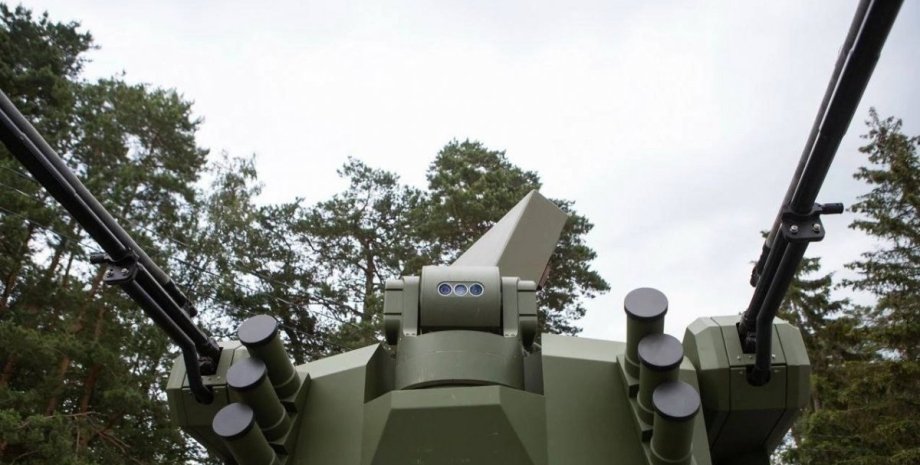
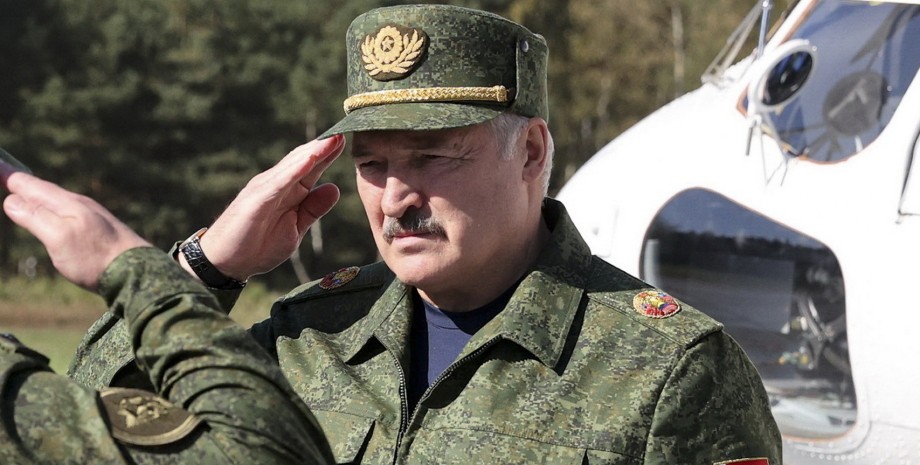
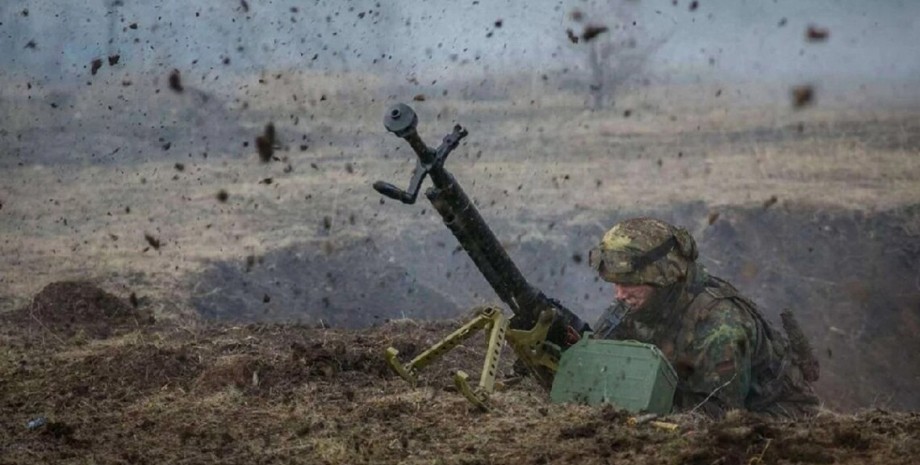

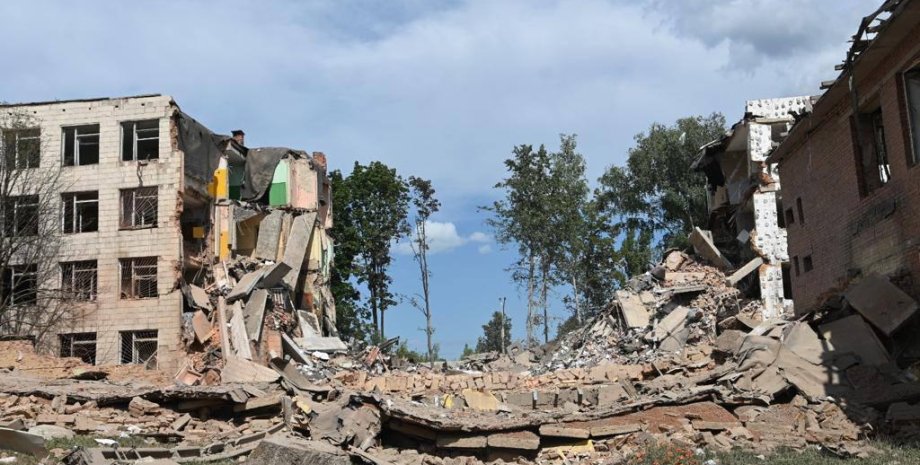
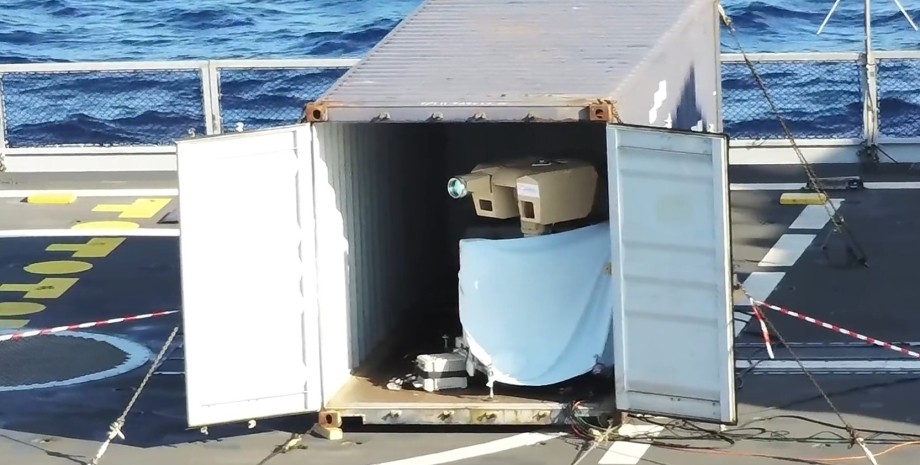
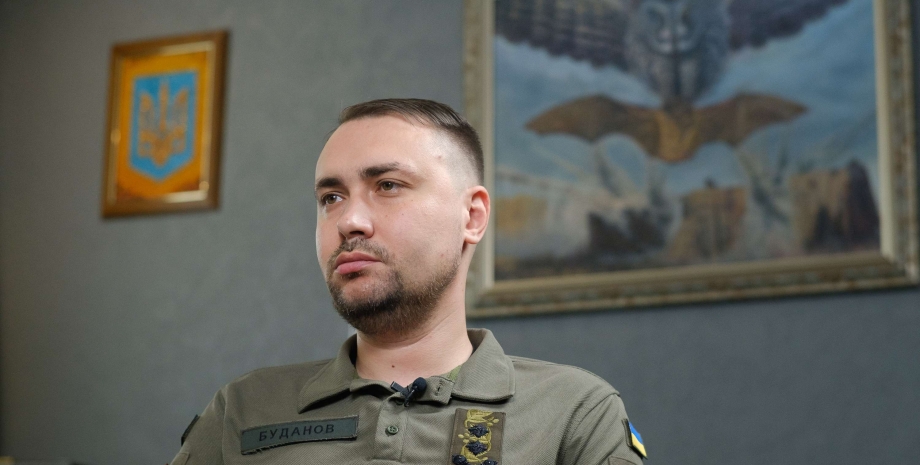
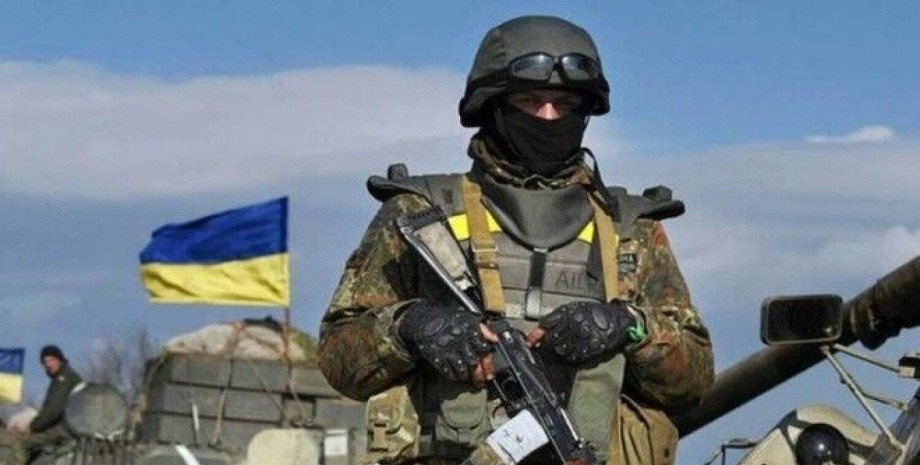
All rights reserved IN-Ukraine.info - 2022